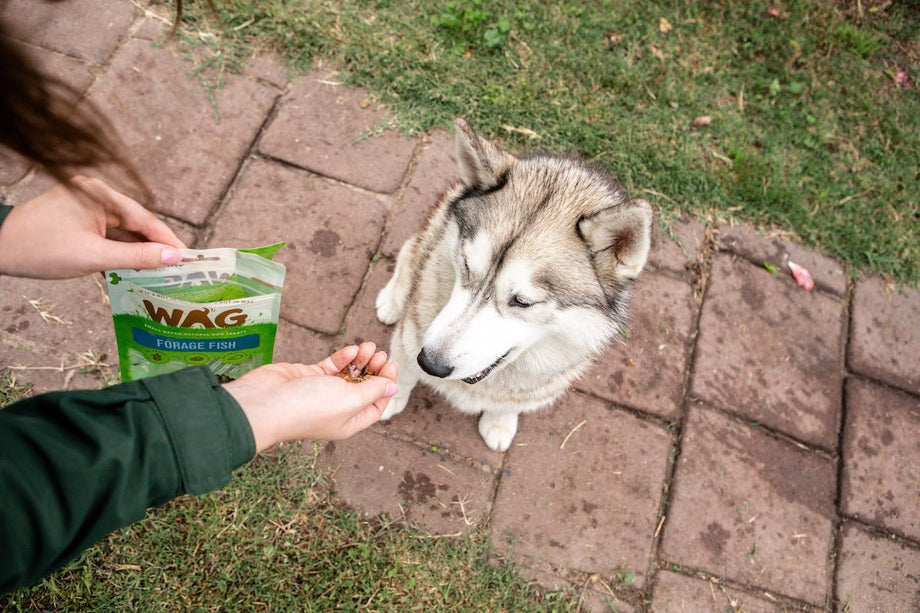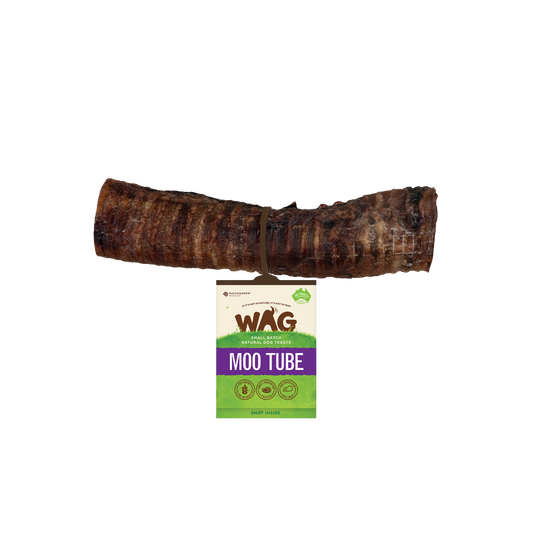Training a dog can be an enormously rewarding experience, but also a seriously difficult one. After all, when two species don’t speak the same language things can get complicated. But you can rescue yourself from another embarrassing performance at doggy obedience school with a bit of methodology around training. We decided to dig deep into the science of using dog treats for training.
Why should I use treats to train?
Let’s assume you have a 9 to 5 job. Every morning you diligently show up, settle into your cubicle, and spend the day painstakingly punching numbers and completing reports. You trek home, exhausted, spending the rest of your night on the couch binge-watching Friends and binge-eating popcorn. Rinse and repeat. On Monday you eagerly await your paycheck, a generous reward for all your hard work. But – there isn’t one.

For dogs, rewards – treats in particular – are like their paycheck. It’s confirmation of a job well-done and motivation to keep doing it. Training without rewards is like working for no pay check. It’s not motivating, it’s not fun, and your dog would rather jump up on the coach to watch Friends.
But there’s more than one reason that dog training treats are so useful for rewarding your good boy or girl. Are you ready for things to get scientific?
Dogs are operant learners. In basic terms, they learn by consequences – good or bad – or by consequences that punish behaviour or reinforce behaviour. Using a method known as operant conditioning, a dog learns by building associations between a behaviour and a consequence for that behaviour, which informs how they will act in the future.
This is where things get complicated.
Training your dog using operant conditioning
Sometimes training your dog can feel like rocket science. Picture this: you’re standing in your living room, pockets bursting with morsels of jerky or yoghurt drops, hand primed and ready.
“Buffy, sit!”
Buffy stares.
“Sit, Buffy, sit!”
Buffy blinks at you, deeply confused about this new game and wondering when she can resume shredding your lucky pair of socks.
Been there, done that? Don’t be shy now, we all have too. How does Buffy know what she’s supposed to do?
Have you ever used the terms ‘positive reinforcement’ or ‘negative reinforcement’? The chances are, you’ve been using them wrong. To truly understand operant conditioning, you need to understand the terminology.

The scientific definition of a ‘positive’ behaviour means to add or apply something. It actually has very little to do with the behaviour being ‘good!’ Similarly, a ‘negative’ behaviour means to subtract or take away something. This could be taking away the fun scenario that your dog is yearning for, such as stalling when they pull on a leash.
To reinforce something means to strengthen or increase a behaviour. In comparison, to punish something means to weaken or decrease a behaviour.
When you are training your dog your need to identify what behaviour your dog is exhibiting and whether you want to increase or decrease it with reinforcement, or punishment. Once that decision is made it’s time to decide whether you’re going to do that by adding something or detracting something. This is where the positive or negative component comes in.
We know these terms can be confusing separately. But together they make up the four quadrants of Operant Conditioning, which goes as follows:
Positive Reinforcement
A favourable outcome occurs or is given after a desired behaviour. For example: Buffy sits on command, so she receives a treat to reinforce the positive behaviour.
Positive Punishment
An unfavourable outcome is added after an undesired behaviour. For example: on a walk Buffy is pulling on the leash. So, you apply pressure on the leash when Buffy is pulling to add a consequence to the behaviour.
Negative Reinforcement
An unpleasant or unfavourable outcome is removed when the desired behaviour is presented. For example: Buffy stops pulling on her walk, and so you remove the pressure on the leash.
Negative Punishment
A favourable outcome is removed after an undesired behaviour is performed. For example: you reach down to give Buffy a treat, but she jumps up. So, she no longer receives that treat.
Making sense yet? The scientific method of Operant Conditioning doesn’t just work with dogs – it works with mice, rats, sea-life and even humans! (Ever used oven mitts rather than touching a hot tray with your bare hands?) Almost everybody experiences Operant Conditioning in their day-to-day life, and almost everybody inadvertently uses it with their dogs, often without meaning to.
Common mistakes when training your dog
When training your dog, you want to avoid relying too heavily on aversive methods. Aversive training essentially means training your dog by only using the punishment components of Operant Conditioning. It attempts to stop your dog presenting bad behaviour by associating it with an unpleasant effect. But there’s a reason that so many vets don’t recommend punishing your dog for training. Because punishment training on its own does not work.
When using positive punishment or negative punishment they should always be paired with the opposing reinforcement methodology.
For example, if Buffy is pulling on her lead and you apply pressure as a positive punishment, you should also release the pressure when the behaviour stops as part of negative reinforcement. This will help teach Buffy that pulling doesn’t just put pressure on the leash, but the pressure being released is a consequence for her not pulling.
Similarly, if Buffy jumps up for her treats and you negatively punish her for bad behaviour, work to make her sit to perform well to give her a treat and add positive reinforcement to the session. This will help teach her that not jumping up will be rewarded.
What treats should I use to train?
Now that we understand just why rewards are so effective at teaching dogs (and scientifically proven to work), we can discuss how to use dog treats as training treats to successfully teach and reward your dog.
When using treats to positively reinforce a dog you should always be using something of high value. Remember that pay check metaphor? Now imagine instead of being paid money for your hard work, you were given peanuts. Not only is that not going to pay the rent, it would especially suck if you’re anaphylactic.
The best dog training treats are going to be high-value treats. High-value treats are anything particularly delicious that your dog is not frequently given. Like people, many dogs have distinct and specific tastes – so what Buffy considers as high value might not be the same for Cujo. Experiment with treats of different flavours, textures, and ingredients. For instance, your dog might prefer the full-flavoured crunch of a liver treat to the sweetness of yoghurt drops. It’s your job to figure out their favourites and treat them accordingly.
There’s no need to break the bank with dog training treats. When training with treats, a little should go a long way. Break up your jerky (or liver, or drops, or biscuits, or whatever your high-value reward is) into tiny pieces to stop your doggo from getting full too early in the session. Not only will that make your training session last longer, but it will also help keep your doggo’s calories in check while they’re training!
Treat your dog to good behaviour — with treats!
Treats are one of the most effective tools we have to train our furry fam, and a sure-fire way to boost your dog’s obedience-IQ and your relationship. Once you understand Operant Conditioning and how to navigate the world of treats to find the perfect fit, you’ll be on the fast-track to a dog that can not only listen to you – but speak, stay, drop, and sit-pretty too!
Ready to get training with your dog? Find the perfect dog training treat for their taste buds.
Shop the Recipe
WAG Team
Up Next
5 ways to be a sustainable dog owner





